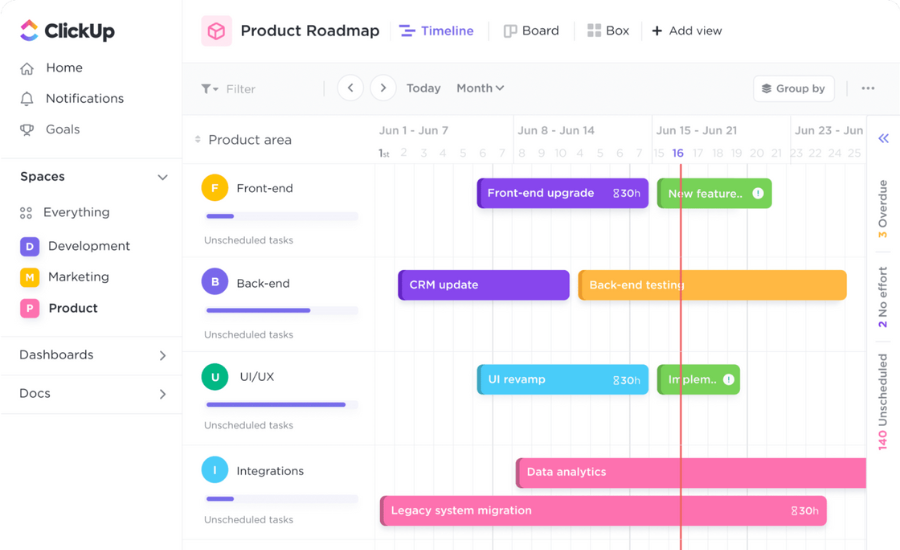
A free strategic planning template is a tool that helps guide the process of developing a strategic plan for an organisation or project. It includes sections covering the organisation’s mission and vision, SWOT analysis, goals and objectives, strategies, and implementation and monitoring. A free strategic planning template provides a framework to facilitate the strategic planning process and can be customised to fit the specific needs of an organisation. It can save time and effort while ensuring that all key aspects of strategic planning are addressed.
How do you create a strategic planning template?
Creating a strategic planning template involves several steps. Here are some general guidelines to follow:
- Define the purpose and scope of the template: Identify the purpose of the template, such as developing a plan for an organisation, project, or initiative. Determine the scope of the template, such as the timeframe for the plan and the specific goals or objectives to be achieved.
- Identify the key sections of the template: Determine the key sections to include in the template based on the needs of the organisation or project. The sections should cover the organisation’s mission and vision, SWOT analysis, goals and objectives, strategies, and implementation and monitoring.
- Define the format and structure of the template: Determine the format and structure of the template, such as the layout, font, and colour scheme. Consider using headings and subheadings to organise the content.
- Develop the content for each section: Write the content for each section of the template, providing clear and concise instructions on how to complete each section. Include examples or prompts to guide users in filling out the template.
- Test the template: Test the template with a small group of users to identify any issues or areas for improvement. Make revisions as needed based on feedback.
- Share the template: Once the template is finalised, share it with the relevant stakeholders or users. Provide training or guidance on how to use the template effectively.
Creating a free strategic planning template can take time and effort, but it can save time and ensure that all key aspects of strategic planning are addressed.
Why is having a strategic planning template important?
Having a strategic planning template is important for several reasons:
- Provides a structured approach: A strategic planning template provides a structured approach to developing a plan for an organisation or project. It ensures that all key elements of strategic planning are included and that the plan is comprehensive and well-organised.
- Saves time and effort: Developing a strategic plan can be a time-consuming and complex process. A template can save time and effort by providing a framework for the plan, which can be customised to fit the specific needs of an organisation or project.
- Promotes consistency: A strategic planning template promotes consistency in the planning process. It ensures that all stakeholders use the same approach and follow the same guidelines, which can improve the quality of the plan and the likelihood of success.
- Facilitates communication: A strategic planning template can facilitate communication among stakeholders by providing a common language and a shared understanding of the plan. It can also help to identify potential conflicts or areas of disagreement and facilitate discussion and resolution.
- Provides a reference point: A strategic planning template provides a reference point for monitoring and evaluating progress towards the plan’s goals and objectives. It can also serve as a starting point for future planning efforts.
Overall, having a free strategic planning template can improve the quality and effectiveness of the planning process, saving time and effort while ensuring that all key aspects of strategic planning are addressed.
How do you write a simple strategic plan?
Here are some general steps to follow when writing a simple strategic plan:
- Define your mission and vision: Start by defining your organisation’s mission and vision. The mission statement should clearly articulate the purpose of your organisation, while the vision statement should describe your desired future state.
- Conduct a SWOT analysis: Assess your organisation’s strengths, weaknesses, opportunities, and threats (SWOT). This analysis can help you identify key areas to focus on in your strategic plan.
- Set goals and objectives: Based on the results of your SWOT analysis, set specific, measurable, achievable, relevant, and time-bound (SMART) goals and objectives. Make sure they align with your organisation’s mission and vision.
- Develop strategies and action plans: Identify the strategies and action plans that will help you achieve your goals and objectives. Make sure they are realistic and feasible within your organisation’s resources and capabilities.
- Establish performance measures: Define the key performance indicators (KPIs) that will be used to measure progress towards your goals and objectives. Make sure they are specific, measurable, and aligned with your organisation’s mission and vision.
- Assign responsibilities and timelines: Assign responsibilities for implementing the strategies and action plans, and establish timelines for completion. Make sure everyone involved understands their roles and is accountable for their actions.
- Review and revise regularly: Regularly review and revise your strategic plan to ensure it remains relevant and effective. This can help you adapt to changes in your organisation’s environment and improve your chances of achieving your goals and objectives.
Writing a simple strategic plan can help your organisation focus on its key priorities and improve its chances of success. By following these steps, you can develop a plan that is clear, concise, and actionable.
What are the 7 elements necessary in writing a strategic plan?
There are various ways to structure a strategic plan, but most effective strategic plans include the following seven key elements:
- Vision statement: A vision statement describes the desired future state or long-term goal of the organisation. It should be inspiring and provide a sense of direction.
- Mission statement: A mission statement defines the purpose and core values of the organisation. It should be clear and concise and reflect the organisation’s reason for being.
- SWOT analysis: A SWOT analysis identifies the organisation’s strengths, weaknesses, opportunities, and threats. This analysis provides a basis for identifying key strategic issues and opportunities.
- Goals and objectives: Goals and objectives are specific, measurable targets that the organisation wants to achieve. They should be aligned with the organisation’s mission and vision and reflect the results of the SWOT analysis.
- Strategies: Strategies are the high-level approaches that the organization will use to achieve its goals and objectives. They should be realistic, feasible, and address key strategic issues.
- Action plans: Action plans identify the specific activities, timelines, and resources required to implement the strategies. They should be linked to the goals and objectives and be assigned to specific individuals or teams.
- Performance measures: Performance measures are used to monitor progress towards the goals and objectives. They should be specific, measurable, and relevant to the organisation’s mission and vision.
By including these seven elements in a strategic plan, an organisation can create a clear and actionable roadmap for achieving its mission and vision. The plan can help the organisation stay focused on its key priorities, adapt to changes in its environment, and improve its chances of success.
How do I write a free strategic plan?
Writing a strategic plan does not necessarily require expensive consultants or software. Here are some steps to follow for writing a free strategic plan:
- Define your mission and vision: Start by defining your organisation’s mission and vision. The mission statement should clearly articulate the purpose of your organisation, while the vision statement should describe your desired future state.
- Conduct a SWOT analysis: Assess your organisation’s strengths, weaknesses, opportunities, and threats (SWOT). This analysis can help you identify key areas to focus on in your strategic plan.
- Set goals and objectives: Based on the results of your SWOT analysis, set specific, measurable, achievable, relevant, and time-bound (SMART) goals and objectives. Make sure they align with your organisation’s mission and vision.
- Develop strategies and action plans: Identify the strategies and action plans that will help you achieve your goals and objectives. Make sure they are realistic and feasible within your organisation’s resources and capabilities.
- Establish performance measures: Define the key performance indicators (KPIs) that will be used to measure progress towards your goals and objectives. Make sure they are specific, measurable, and aligned with your organisation’s mission and vision.
- Assign responsibilities and timelines: Assign responsibilities for implementing the strategies and action plans, and establish timelines for completion. Make sure everyone involved understands their roles and is accountable for their actions.
- Review and revise regularly: Regularly review and revise your strategic plan to ensure it remains relevant and effective. This can help you adapt to changes in your organisation’s environment and improve your chances of achieving your goals and objectives.
To write a free strategic planning template, you can use tools like spreadsheets or free online templates. You can also use free resources like the Small Business Administration’s guide to strategic planning, which provides step-by-step instructions and templates for developing a strategic plan.
Writing a free strategic plan can help your organisation focus on its key priorities and improve its chances of success. By following these steps, you can develop a plan that is clear, concise, and actionable.
What are the five elements of a strategic plan?
There is no one definitive list of the elements that should be included in a strategic plan, as the structure and content of such plans can vary depending on the organisation, industry, and context. However, most effective strategic plans include the following five elements:
- Vision statement: A vision statement is a concise and inspiring description of the organisation’s long-term goals and desired future state. It should provide a clear sense of direction and purpose, and serve as a guide for decision-making.
- Mission statement: A mission statement defines the organisation’s purpose, values, and key objectives. It should be clear and concise, and reflect the organisation’s unique identity and strengths.
- Strategic objectives: Strategic objectives are specific, measurable, and time-bound targets that the organisation wants to achieve. They should be aligned with the organisation’s mission and vision, and reflect its key priorities and strategic initiatives.
- Strategies: Strategies are the high-level approaches that the organisation will use to achieve its strategic objectives. They should be realistic, feasible, and address key strategic issues and opportunities.
- Action plans: Action plans identify the specific activities, timelines, and resources required to implement the strategies and achieve the strategic objectives. They should be linked to the strategic objectives and be assigned to specific individuals or teams.
By including these five elements in a strategic plan, an organisation can create a clear and actionable roadmap for achieving its mission and vision. The plan can help the organisation stay focused on its key priorities, adapt to changes in its environment, and improve its chances of success.
What are the six pillars of strategic planning?
The six pillars of strategic planning are a framework for organising and executing strategic planning activities within an organisation. The six pillars are:
- Vision: The first pillar of strategic planning is vision. A clear and compelling vision helps to provide direction and focus for the organisation’s activities. It is a statement of what the organisation aspires to become and achieve over the long term.
- Mission: The second pillar of strategic planning is mission. The mission statement outlines the organisation’s purpose, core values, and the products or services it provides. It helps to define the organisation’s reason for being and provides a framework for decision-making.
- Objectives: The third pillar of strategic planning is objectives. Objectives are specific, measurable, and time-bound goals that the organisation aims to achieve. They should be aligned with the vision and mission statements and serve as a roadmap for the organisation’s activities.
- Strategy: The fourth pillar of strategic planning is strategy. Strategy is the approach or plan the organisation will use to achieve its objectives. It involves making choices about the resources and actions required to achieve the desired outcomes.
- Tactics: The fifth pillar of strategic planning is tactics. Tactics are the specific actions and activities that the organisation will undertake to implement its strategies and achieve its objectives. They are often detailed and specific to particular projects or initiatives.
- Metrics: The final pillar of strategic planning is metrics. Metrics are the measures that the organisation will use to evaluate progress towards its objectives. They are important for tracking performance and identifying areas for improvement.
By focusing on these six pillars, organisations can develop a comprehensive and effective strategic plan. Each pillar helps to ensure that the plan is grounded in a clear and compelling vision, is aligned with the organisation’s mission and values, and is structured to achieve specific, measurable objectives. The use of metrics helps to track progress and ensure that the plan remains relevant and effective over time.
Strategic action plan template excel
A strategic action plan template in Excel is a tool that organisations can use to create a detailed plan for achieving their strategic objectives. Excel is a popular software application that offers a range of features for organising and analysing data, making it well-suited for creating a strategic action plan.
The template typically includes a series of columns and rows that are used to organise the key components of the action plan, including:
- Goals and objectives: This section outlines the specific goals and objectives that the organisation aims to achieve. These should be clearly defined and measurable, and should align with the organisation’s mission and vision.
- Strategies: This section outlines the strategies that the organisation will use to achieve its goals and objectives. Each strategy should be described in detail, with specific action steps and timelines identified.
- Actions: This section outlines the specific actions that the organisation will take to implement its strategies. Each action should be clearly defined and assigned to a specific individual or team, with deadlines and milestones identified.
- Resources: This section outlines the resources that will be required to implement the action plan. This can include people, materials, equipment, and funding.
- Metrics: This section outlines the key performance indicators that will be used to measure progress towards the organisation’s goals and objectives. This can include both qualitative and quantitative measures.
The strategic action plan template in Excel is designed to be flexible and customizable, allowing organisations to tailor the plan to their specific needs and priorities. By using this tool, organisations can create a clear and actionable roadmap for achieving their strategic objectives, and can track progress and make adjustments as needed.
Nonprofit strategic plan template word
A nonprofit strategic plan template in Word is a tool that nonprofit organisations can use to create a comprehensive plan for achieving their goals and objectives. Word is a popular word processing software application that offers a range of features for creating and editing documents, making it well-suited for developing strategic plans.
The template typically includes a series of sections that cover the key components of the strategic plan, including:
- Executive summary: This section provides a brief overview of the strategic plan, outlining the organisation’s mission, vision, and key objectives.
- Organisational analysis: This section provides an analysis of the organisation’s strengths, weaknesses, opportunities, and threats (SWOT analysis). This can help the organisation to identify areas where it is performing well and areas where it needs to improve.
- Goals and objectives: This section outlines the specific goals and objectives that the organisation aims to achieve. These should be clearly defined and measurable, and should align with the organisation’s mission and vision.
- Strategies: This section outlines the strategies that the organisation will use to achieve its goals and objectives. Each strategy should be described in detail, with specific action steps and timelines identified.
- Implementation plan: This section outlines the specific actions that the organisation will take to implement its strategies. Each action should be clearly defined and assigned to a specific individual or team, with deadlines and milestones identified.
- Performance metrics: This section outlines the key performance indicators that will be used to measure progress towards the organisation’s goals and objectives. This can include both qualitative and quantitative measures.
The nonprofit strategic plan template in Word is designed to be flexible and customizable, allowing non profit organisations to tailor the plan to their specific needs and priorities. By using this tool, nonprofit organisations can create a clear and actionable roadmap for achieving their strategic objectives, and can track progress and make adjustments as needed.
Strategic plan example
A strategic plan is a comprehensive document that outlines an organisation’s mission, vision, goals, and strategies for achieving those goals. It typically includes a detailed analysis of the organisation’s internal and external environment, identifies key strengths and weaknesses, and outlines a plan of action for achieving the organisation’s goals and objectives.
Here is an example of what a strategic plan might look like:
- Executive summary: This section provides a brief overview of the strategic plan, highlighting the organisation’s mission, vision, and key objectives.
- Organisational analysis: This section provides an in-depth analysis of the organisation’s internal and external environment, including a SWOT analysis that identifies key strengths, weaknesses, opportunities, and threats.
- Goals and objectives: This section outlines the specific goals and objectives that the organisation aims to achieve, along with measurable targets and timelines for achieving them.
- Strategies: This section outlines the strategies that the organization will use to achieve its goals and objectives. Each strategy should be described in detail, with specific action steps and timelines identified.
- Implementation plan: This section outlines the specific actions that the organisation will take to implement its strategies. Each action should be clearly defined and assigned to a specific individual or team, with deadlines and milestones identified.
- Performance metrics: This section outlines the key performance indicators that will be used to measure progress towards the organisation’s goals and objectives. This can include both qualitative and quantitative measures.
- Risk management: This section outlines the potential risks and challenges that the organisation may face in achieving its goals, along with a plan for managing those risks.
- Monitoring and evaluation: This section outlines the process for monitoring progress towards the organisation’s goals and objectives, and for evaluating the effectiveness of the strategic plan.
This is just one example of what a strategic plan might look like, and the specific elements of a strategic plan may vary depending on the organisation’s goals, priorities, and resources. However, all strategic plans should include a clear roadmap for achieving the organisation’s objectives, along with a plan for measuring progress and making adjustments as needed.
Faqs
Here are some frequently asked questions (FAQs) about free strategic planning templates:
Q1.What is a strategic planning template?
A strategic planning template is a tool that organisations can use to create a comprehensive plan for achieving their goals and objectives. It typically includes sections for outlining the organisation’s mission and vision, analysing the internal and external environment, identifying goals and objectives, developing strategies, and creating an implementation plan.
Q2.How do I use a strategic planning template?
To use a strategic planning template, start by reviewing the sections included in the template and identifying the information you need to provide for each section. Then, use the template to organise your thoughts and create a comprehensive strategic plan. Be sure to customise the template to fit your organisation’s specific needs and priorities.
Q3.Where can I find free strategic planning templates?
There are many sources for free strategic planning templates, including online template libraries, business planning websites, and nonprofit support organisations. You can also create your own template using a word processing or spreadsheet program.
Q4.What should I include in a strategic planning template?
A strategic planning template should include sections for outlining the organisation’s mission and vision, analysing the internal and external environment, identifying goals and objectives, developing strategies, creating an implementation plan, and monitoring and evaluating progress. Other sections may be included based on the organisation’s specific needs and priorities.
Q5.How often should I update my strategic plan?
Strategic plans should be reviewed and updated regularly, typically on an annual basis. However, it is important to revisit the plan more frequently if significant changes occur in the organisation’s internal or external environment. Regular monitoring and evaluation of progress towards the organisation’s goals can help identify areas where the plan needs to be adjusted or revised.
Conclusion
In conclusion, a free strategic planning template is an essential tool for organisations to create a comprehensive plan for achieving their goals and objectives. A well-designed template can help ensure that all necessary elements are included in the plan, and can make the planning process more efficient and effective. By using a strategic planning template, organisations can develop a clear roadmap for success, identify potential risks and challenges, and monitor and evaluate progress towards their goals. With the many free strategic planning templates available, organisations of all types and sizes can create a strategic plan that meets their specific needs and helps them achieve their mission and vision.



